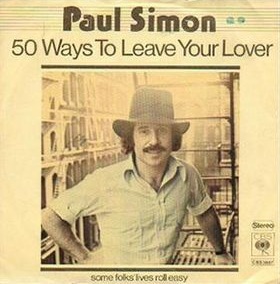
"50 Ways to Leave Your Lover" is a song by the American singer-songwriter Paul Simon. It was the second single from his fourth studio album, Still Crazy After All These Years (1975), released on Columbia Records. Backing vocals on the single were performed by Patti Austin, Valerie Simpson, and Phoebe Snow. The song features a recognizable repeated drum riff performed by drummer Steve Gadd.

"Since I Don't Have You" is a song written and composed by Jackie Taylor, James Beaumont, Janet Vogel, Joseph Rock, Joe Verscharen, Lennie Martin, and Wally Lester. It was first a 1958 hit single for the doo-wop group the Skyliners on the Billboard Hot 100. Country music singer Ronnie Milsap had a hit with the song in 1991. American hard rock band Guns N' Roses also had some success in 1994 with their version of the song which reached the top 10 on the UK Singles Chart.

"Wake Up Little Susie" is a popular song written by Felice and Boudleaux Bryant and published in 1957.
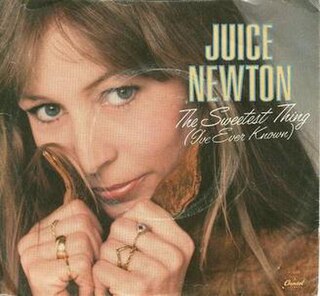
"The Sweetest Thing (I've Ever Known)" is a country-pop song written by Otha Young for Juice Newton in the mid-1970s. Newton was known for charting hits on the Hot 100, Adult Contemporary, and Hot Country charts - and this song has the distinction of being the only single of hers to reach the top 10 on all three of those charts, peaking at #1 on two of them.
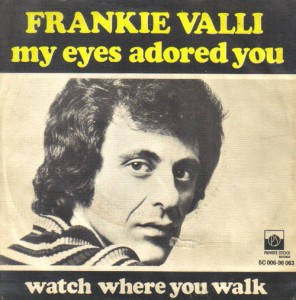
"My Eyes Adored You" is a 1974 song written by Bob Crewe and Kenny Nolan. It was originally recorded by The Four Seasons in early 1974. After the Motown label balked at the idea of releasing it, the recording was sold to lead singer Frankie Valli for $4000. After rejections by Capitol and Atlantic Records, Valli succeeded in getting the recording released on Private Stock Records, but the owner/founder of the label, Larry Uttal, wanted only Valli's name on the label. The single was released in the US in November 1974 and topped the Billboard Hot 100 in March 1975. "My Eyes Adored You" also went to number 2 on the Easy Listening chart. Billboard ranked it as the No. 5 song for 1975.
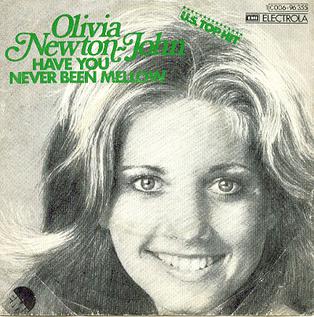
"Have You Never Been Mellow" is a song recorded by British-Australian singer Olivia Newton-John for her 1975 fifth studio album of the same name. Written and produced by John Farrar, the song was released as the lead single from the album in January 1975.
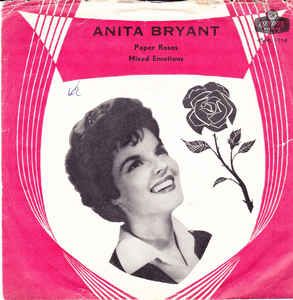
"Paper Roses" is a popular song written and composed by Fred Spielman and Janice Torre. It first was a top five hit in 1960 for Anita Bryant. Marie Osmond recorded it in 1973 and took her version to number one on the US country chart.

"Cecilia" is a song by American musical duo Simon & Garfunkel. It was released in April 1970 as the third single from the group's fifth studio album, Bridge over Troubled Water (1970). Written by Paul Simon, the song's origins lie in a late-night party, in which the duo and friends began banging on a piano bench. They recorded the sound with a tape recorder, employing reverb and matching the rhythm created by the machine. Simon later wrote the song's guitar line and lyrics on the subject of an untrustworthy lover.

"Goodbye Girl" is a song by David Gates, lead singer of Bread, which was released as a single in December 1977 following the premiere of the hit film of the same name. As the theme song to the film, the song reached number 15 on the Billboard Hot 100, becoming the biggest hit of Gates' solo career. It also reached number three on the Adult Contemporary chart. The song is from Gates' third solo album of the same name, released the following year.
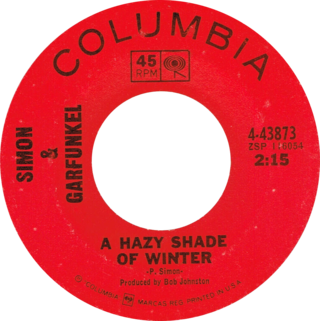
"A Hazy Shade of Winter" is a song by American music duo Simon & Garfunkel, released on October 22, 1966, initially as a stand-alone single, but subsequently included on the duo's fourth studio album, Bookends (1968). It peaked at number 13 on the Billboard Hot 100.

"A Love Song" is a song written by Kenny Loggins and Dona Lyn George, first released by the folk-rock duo Loggins and Messina in 1973 on their album Full Sail. Country artist Anne Murray covered the song later that year for her album of the same name.

"Even the Nights Are Better" is the song from 1982 by the British/Australian soft rock duo Air Supply, from their 1982 album Now and Forever.
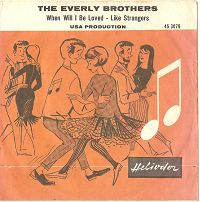
"When Will I Be Loved" is a popular song written by Phil Everly of the Everly Brothers, who had a US top-ten hit with it in 1960. Linda Ronstadt covered the song in 1975, and her version was an even bigger hit in the US, peaking at No. 2. Vince Gill also covered it in 1994 on the soundtrack of the film 8 Seconds.

"You Belong to Me" is a song written by American singer-songwriters Carly Simon and Michael McDonald. Originally recorded by McDonald's rock group The Doobie Brothers for their seventh studio album, Livin' on the Fault Line (1977), the song was made famous by Simon when she recorded it for her seventh studio album, Boys in the Trees (1978). A live version of the song from The Doobie Brothers' 1983 album Farewell Tour would later chart on the Pop Singles chart at No. 79 in August 1983.

"My Boy" is a popular song from the early 1970s. The music was composed by Jean-Pierre Bourtayre and Claude François, and the lyrics were translated from the original version "Parce que je t'aime, mon enfant" into English by Phil Coulter and Bill Martin.

"All I Know" is a song written by American songwriter Jimmy Webb, first recorded by Art Garfunkel on his 1973 debut solo album, Angel Clare, released by Columbia Records. Instrumental backing was provided by members of the Wrecking Crew, L.A. session musicians. Garfunkel's version is the best known and highest-charting version, peaking at number nine on the Billboard Hot 100 and number one on the Easy Listening chart for four weeks in October 1973. Garfunkel's version begins with a solo piano, before he begins to sing. When the orchestration is beginning to fade out, the solo piano takes over, playing melodic passages to the song's end.

"Break Away" is a song written by Benny Gallagher and Graham Lyle and first recorded by Art Garfunkel for his 1975 album Breakaway. Gallagher and Lyle released their own version on their 1976 album, also titled Breakaway.
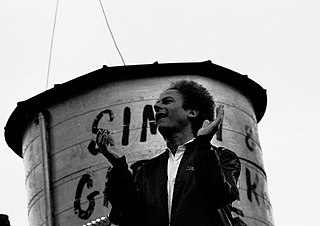
Art Garfunkel is an American singer, best known for participating with Paul Simon in the folk duo Simon & Garfunkel. Garfunkel released ten studio albums, one live album, four compilation albums and twenty-nine singles.
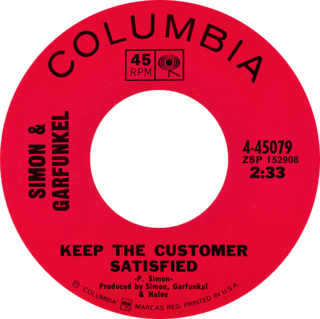
"Keep the Customer Satisfied" is a song by American music duo Simon & Garfunkel from the group's fifth studio album, Bridge over Troubled Water (1970). It was included as the B side of their signature hit, "Bridge Over Troubled Water". "Keep the Customer Satisfied" recounts the exhausting tours that Simon grew tired of, a similar theme to that of their earlier song, "Homeward Bound".

"How Sweet It Is (To Be Loved by You)" is a song recorded by American soul singer Marvin Gaye from his fifth studio album of the same name (1965). It was written in 1964 by the Motown songwriting team of Holland–Dozier–Holland, and produced by Brian Holland and Lamont Dozier. The song title was inspired by one of the actor and comedian Jackie Gleason's signature phrases, "How Sweet It Is!"




















